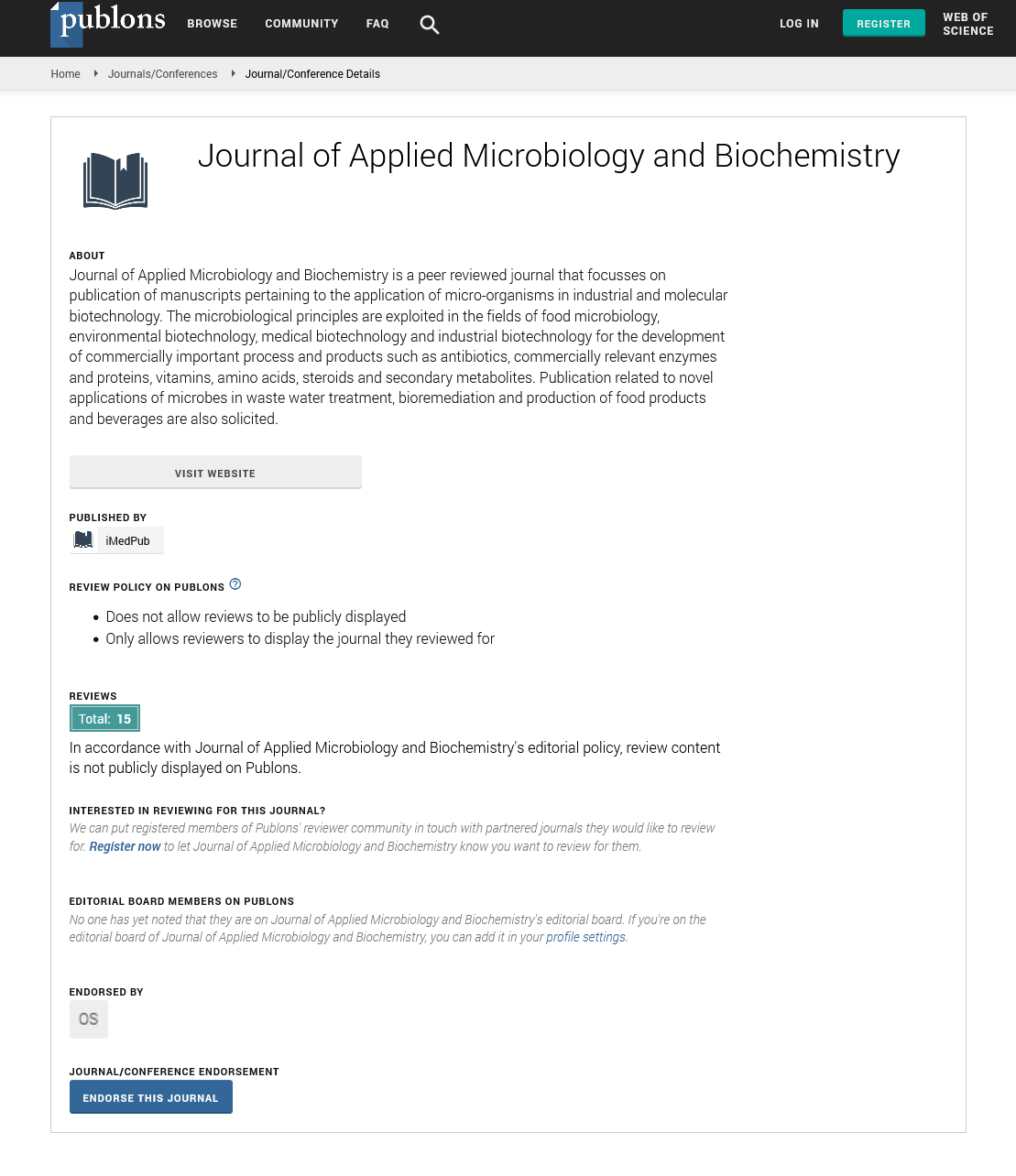ISSN : ISSN: 2576-1412
Journal of Applied Microbiology and Biochemistry
Abstract
Bacteriological Profile and Antimicrobial Sensitivity Pattern in Sterile Body Fluids from a Tertiary Care Hospital
Background:
Sterile body sites, if infected by micro-organisms than it can lead to severe morbidity and mortality. Therefore early diagnosis and prompt initiation of empiric treatment is necessary.
Aim:
This study was done to evaluate causative organisms of sterile body site infections and their antimicrobial sensitivity pattern in a tertiary care hospital, New Delhi.
Settings and design:
Prospective study over a period of one year from January 2015 to December 2015.
Material and methods:
Sterile body fluid specimens were processed for bacterial culture according to the standard procedures and antimicrobial susceptibility test for isolated organisms was done using agar disk diffusion method.
Results:
Amongst 405 samples, 122 fluids samples showed growth of organisms with an isolation rate of 30%. Isolates from different fluids were E. coli (28.6%), Acinetobacter spp. (27%), Klebseilla spp. (19.6%), Staphylococcus aureus (10.6%), Enterococcus spp. (7.3%), Pseudomonas spp. (4.9%) and Citrobacter spp. (1.6%). Gram negative isolates were mostly sensitive to carbepenems, colistin and polymyxin B (100%) and gram positive isolates were highly sensitive to vancomycin (100%), linezolid (100%) and ciprofloxacin (70%). Acinetobacter was the most resistant pathogens to many antibiotics. About 38.5% of S. aureus isolates in our study were MRSA.
Conclusion:
Therefore, knowledge of bacteriological and antimicrobial profile of sterile body fluids is important so that such life threatening infections can be treated effectively on an urgent basis.
Author(s): Rajani Sharma, Anuradha and Duggal Nandini
Abstract | Full-Text | PDF
Share This Article
Google Scholar citation report
Citations : 259
Journal of Applied Microbiology and Biochemistry received 259 citations as per Google Scholar report
Journal of Applied Microbiology and Biochemistry peer review process verified at publons
Abstracted/Indexed in
- Google Scholar
- China National Knowledge Infrastructure (CNKI)
- Cosmos IF
- Directory of Research Journal Indexing (DRJI)
- Publons
- Secret Search Engine Labs
Open Access Journals
- Aquaculture & Veterinary Science
- Chemistry & Chemical Sciences
- Clinical Sciences
- Engineering
- General Science
- Genetics & Molecular Biology
- Health Care & Nursing
- Immunology & Microbiology
- Materials Science
- Mathematics & Physics
- Medical Sciences
- Neurology & Psychiatry
- Oncology & Cancer Science
- Pharmaceutical Sciences
